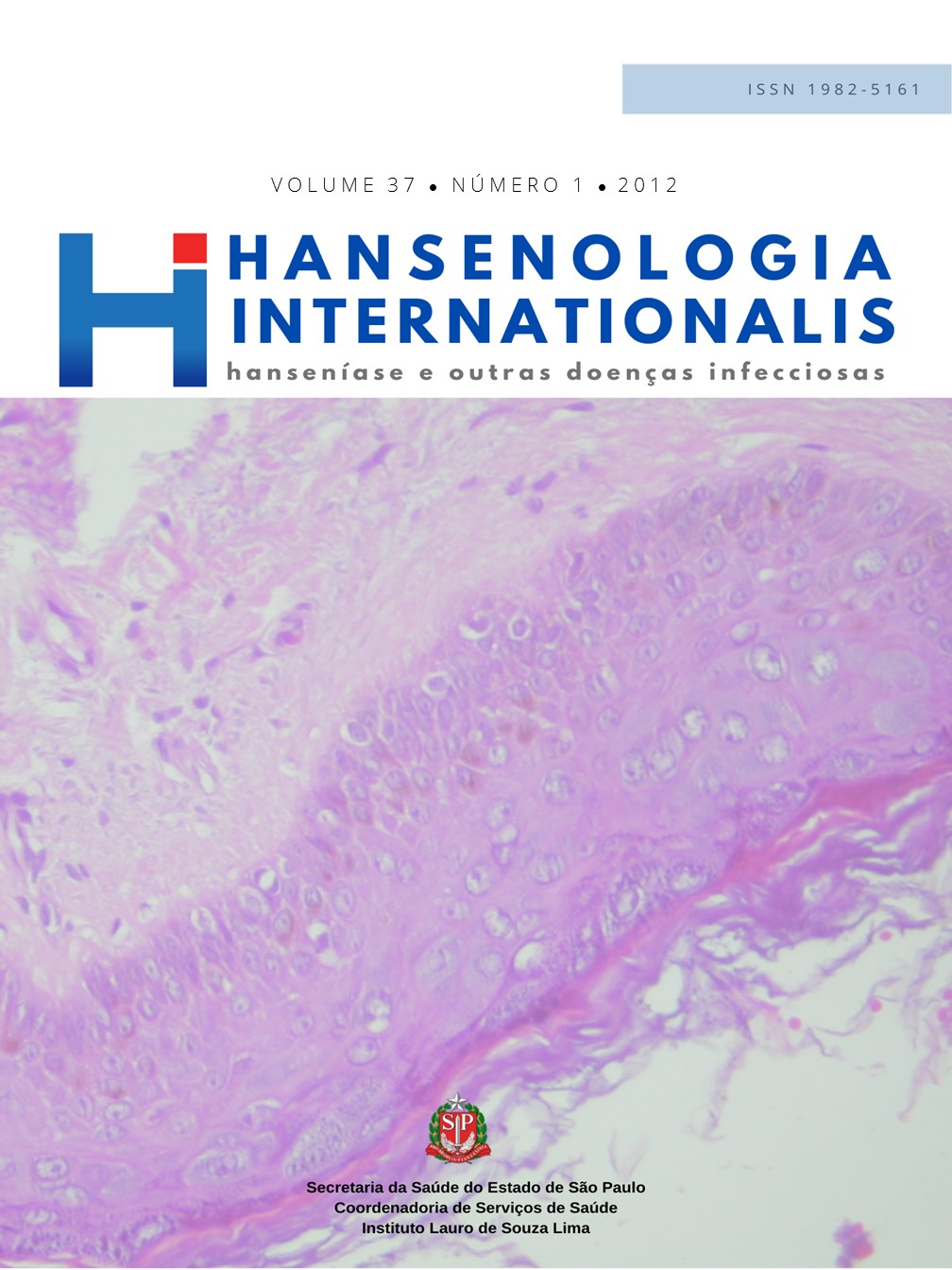Abstract
Leprosy is caused by the bacillus Mycobacterium leprae (M. leprae), presenting the capacity to infect multiple individuals with infection of the upper airways. Hansen considered a public health problem, especially in underdeveloped countries and developing countries, due tothe presence of disabilities and social stigma. In recent years, the Low Intensity Laser Therapy (LILT) has been a therapy used in the repair process of healing chronic wounds, which is one of the most frequent consequence of leprosy, with high series. The study included 13 patients with chronic wounds caused by leprosy, divided into two groups: 4 patients in the control group (GI) and 9 patients (GII) submitted to LTBI, with the parameters: 660 nm, 20 mW, the active medium InGaAlP (aluminum gallium indium phosphide), continuous emission, the output beam area of 0.04 cm ² dose 5 J / cm ² and 10 s per point. All participants were treated at the Hospital of Cologne Carpina (Parnaíba, PI) and some had more than one injury. The total experimental time was 4 months and the lesions were macroscopically evaluated, measured and photographed every 4 weeks. It was also carried out microbiological analysis of the lesions, to assess the presence of contamination in the region. The results allowed to verify that small injuries, not contaminated and in patients without associated diseases, showed tissue repair. On the other hand, the LTBI applied to large lesions in patients with diseases associated with the presence of contamination, showed an increase in the diameter of the wound, slowing the healing process. In conclusion, the results obtained in this study, the experimental conditions used, demonstrated the applicability of LILT in the process of tissue repair in patients with chronic wounds caused by leprosy uncontaminated and of smaller diameter. LILT favored the evolution of this process and allowed qualitative improvement in the appearance of lesions as well as pain and exudate reduction.
References
2 Anisimov AI, Belyĭ KP, Kanykin AIU. Use of Helium-neon laser in the ambulatory treatment of hypertrophic skin cicatrices and slowly granulating wounds. Vestn Khir Im I I Grek; 1988; 141(10):97-8.
3 Aquino DMC, Caldas AJM, Silva AAM, Costa JML. Perfil dos pacientes com hanseníase em área hiperendêmica da Amazônia do Maranhão, Brasil. Rev Soc Bras Med Trop. 2003; 36(1):57-6.
4 Araújo MG. Hanseníase no Brasil. Rev Soc Bras Med Trop.2003; 36(3):373-82.
5 Bagnato VS. Os Fundamentos da Luz Laser. Física na Escola. 2001; 2(2):4-9.
6 Barreto JG, Salgado CG. Clinic-epidemiological evaluation of ulcers in patients with leprosy sequelae and the effect of low level laser therapy on wound healing: a randomized clinical trial. Healing Light Seminars. BMC Infect Dis. 2010; 10(237).
7 Chavantes MC (Org.). Laser em biomedicina: Princípios e Prática. São Paulo: Atheneu, 2009.
8 Coutinho, F, Giordano V, Santos CM, Carneiro AF, Amaral NP, Touma MC. et al. O efeito do laser de baixa energia no crescimento bacteriano “in vitro”. Rev Bras Ortop. 2007;42(8):248-53.
9 Erdle BJ et al. Effects of continuous-wave (670-nm) red light on wound healing. Dermatol Surg. 2008;34(3):320-5.
10 Gonçalves G, Gonçalves A, Padovani CR, Parizotto NA. Promovendo a cicatrização de úlceras hansênicas e não hansênicas com laserterapia: ensaio clínico em unidades ambulatoriais no Sistema Único de Saúde. Hansen Int. 2000; 25(2):133-42.
11 Goulart IMB, Penna GO, Cunha G. Imunopatologia da hanseníase: a complexidade dos mecanismos da resposta imune do hospedeiro ao Mycobacterium leprae. Rev Soc Bras Med. Trop. 2002; 35(4):363-75.
12 Iupatov SI, Smotrin SM, Gavcrilik BL, Sten’ko VG. Treatment of trophic ulcers of the lower extremitiesind elderly patients. Khirurgiia 1990;5:105-8.
13 Jori G, Fabris C, Soncin M, Ferro S, Coppellotti O, Dei D. et al. Photodynamic therapy in the treatment of microbial infections: basic principles and perspective applications. Lasers Surg Med. 2006; 38(5):468-81.
14 Lastória JC, Putinatti MSMA. Utilização de busca ativa de hanseníase: relato de uma experiência de abordagem na detecção de casos novos. Hansen Int. 2004; 29(1):6-11.
15 Magalhães MCC, Rojas LI. Diferenciação territorial da hanseníase no Brasil. Epidemiol Serv Saúde. 2007; 16(2):75-84.
16 Medrado, AR, Pugliese LS, Reis SR, Andrade ZA. Influence of Low Level Laser Therapy on Wound Healing and Its Biological Action Upon Myofibroblasts. Lasers Surg Med. 2003; 32(3):239-44.
17 Ministério da Saúde. Vigilância em Saúde: situação epidemiológica da hanseníase no Brasil. Boletim Novembro, 2008.
18 Nussbaum EL, Lilge L, Mazzulli T. Effects of 630-, 660-, 810-, and 905-nm Laser Irradiation Delivering Radiant Exposure of 1–50 J/cm2 on Three Species of Bacteria in vitro. J Clin Laser Med Surg. 2002; 20(6):325-3.
19 Rocha JCT, Catanho MTJA, Mota DL. Application of the Laser Radiation in Patients of Pressere ulcers: Clinical and Histomorphometric Analysis of the Derm. Braz Arch Biol Technol. 2008; 51:231-34.
20 Vuksic M, Monascevic M. The use of the helium-neon laser for treating bad sores in elderly patients with psychiatric disorders. Medical Laser Report. 1985; 3:29-35.
This journal is licensed under a Creative Commons Attribution 4.0 International License.
